Abstract
Lemna gibba L., strain G3, exhibits a qualitative long-day flowering response with a critical daylength on a 24-hour cycle of about 10 hours. Evidence is presented that the onset of daughter frond formation in a given frond inhibits the activity of the flowering meristem. Consequently, flower induction can only occur in fronds smaller than about 0.05 to 0.07 mm long. Although a minimum of 1 long day seems to be sufficient to induce the formation of flower primordia, at least 6 long days are required to obtain mature flowers since long days are also required for the early stages of flower development. The critical night length on 24, 48 and 72-hour cycles is respectively 14, 16, and 18 to 22 hours. The close similarity between the critical night length for the different cycle lengths is explained in terms of an inhibitory effect of darkness both on flower initiation and flower development. A 10-hour dark period is more inhibitory to flowering on a 36-hour cycle than on 24, 48, 60 or 72-hour cycles. It is suggested that darkness inhibits flowering through the formation of a light-labile flower inhibitor which acts to inhibit the functioning of the flowering stimulus.
Full text
PDF
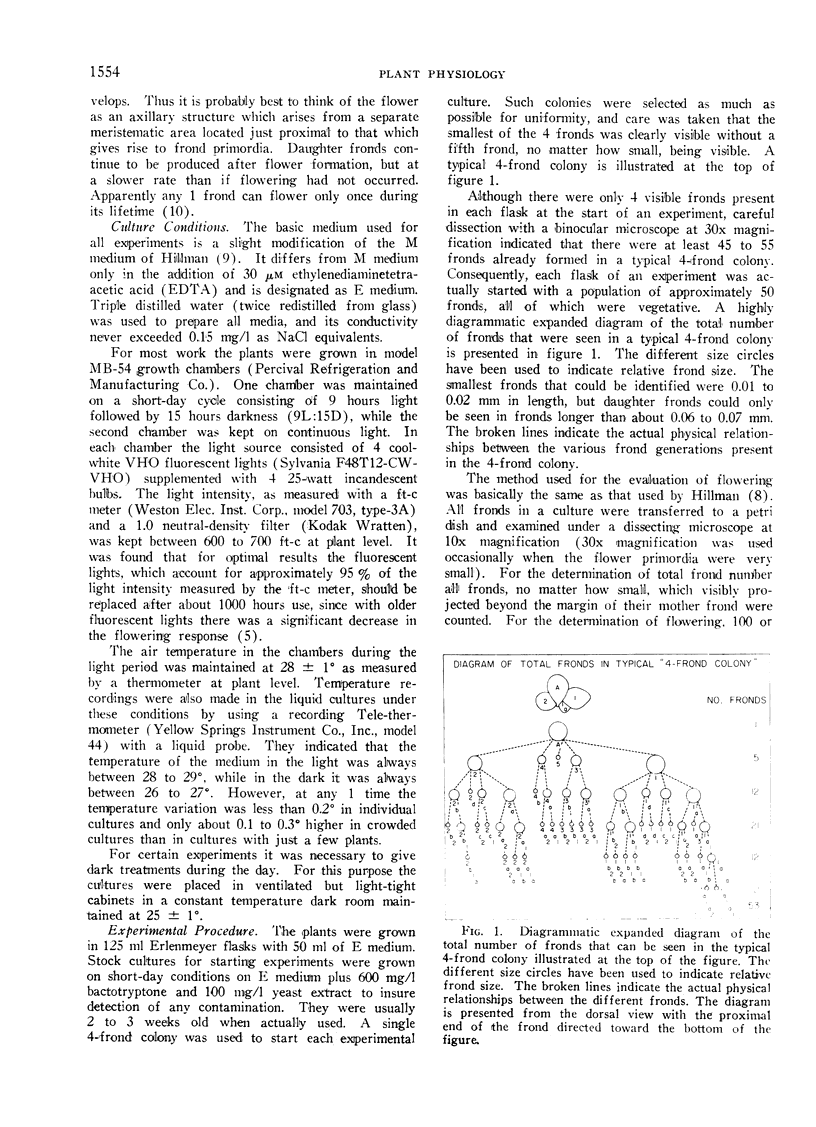
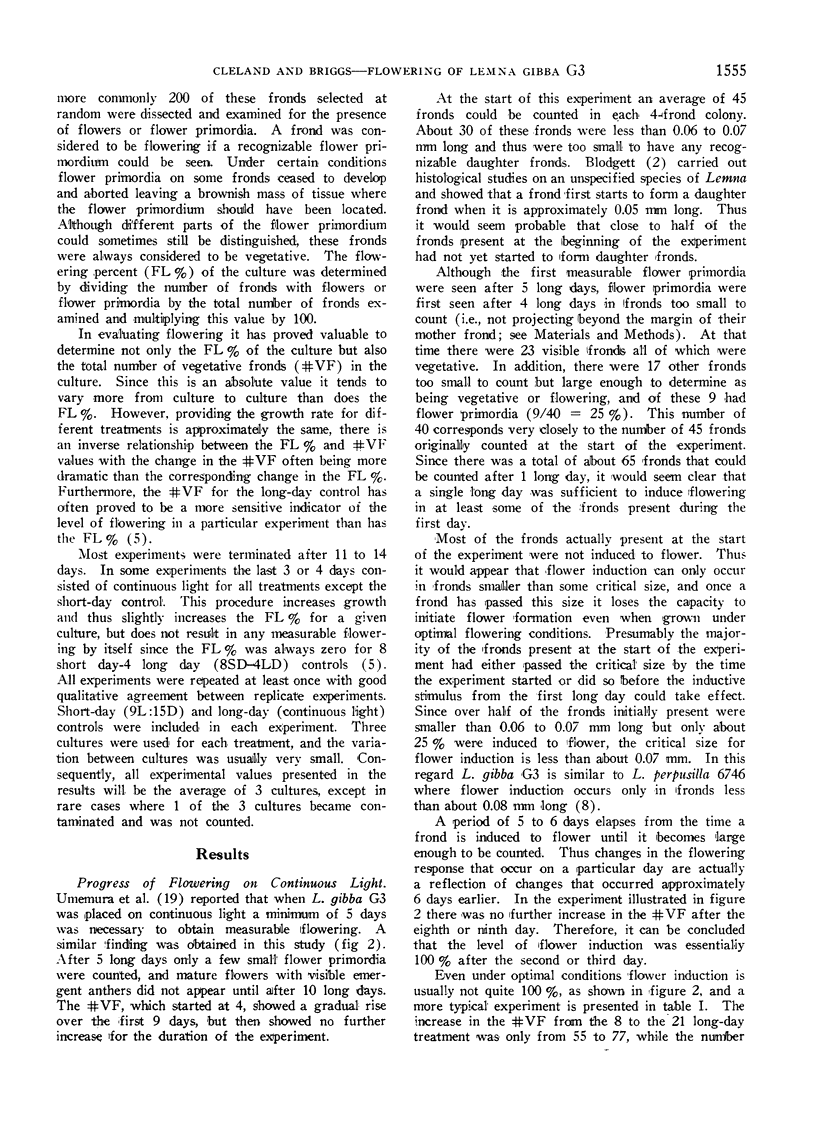
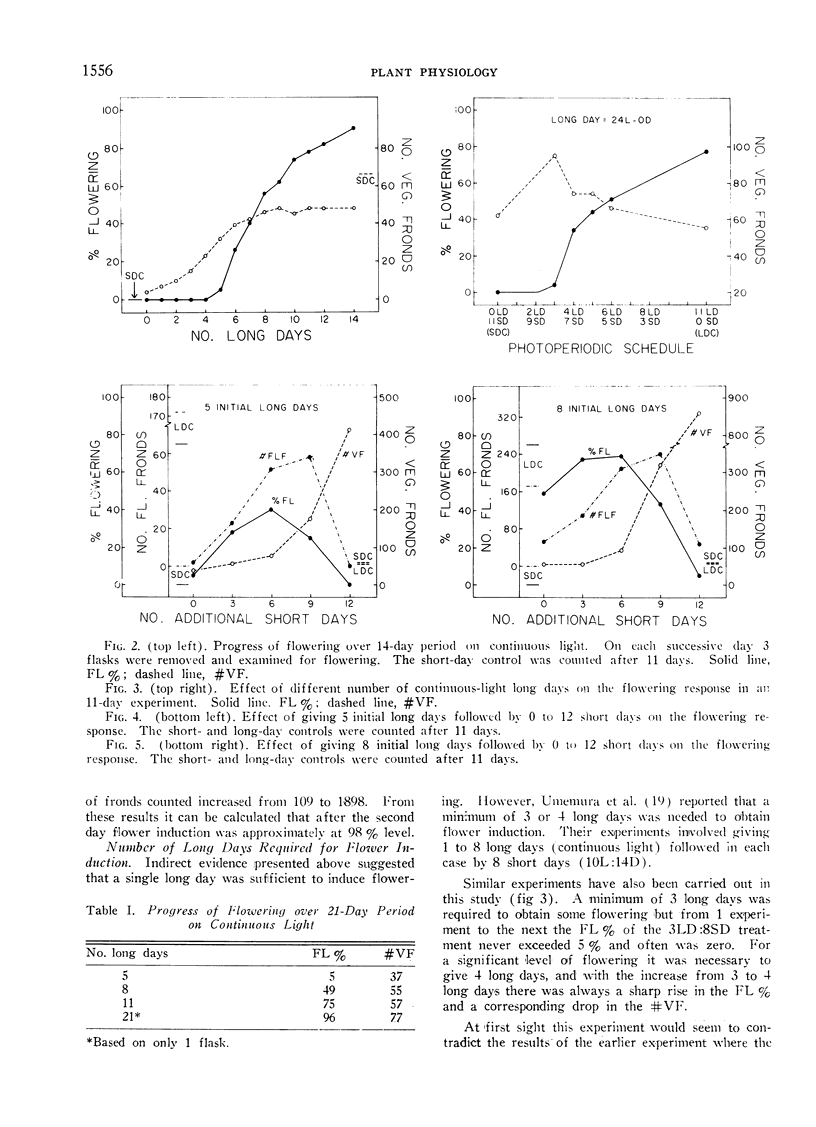
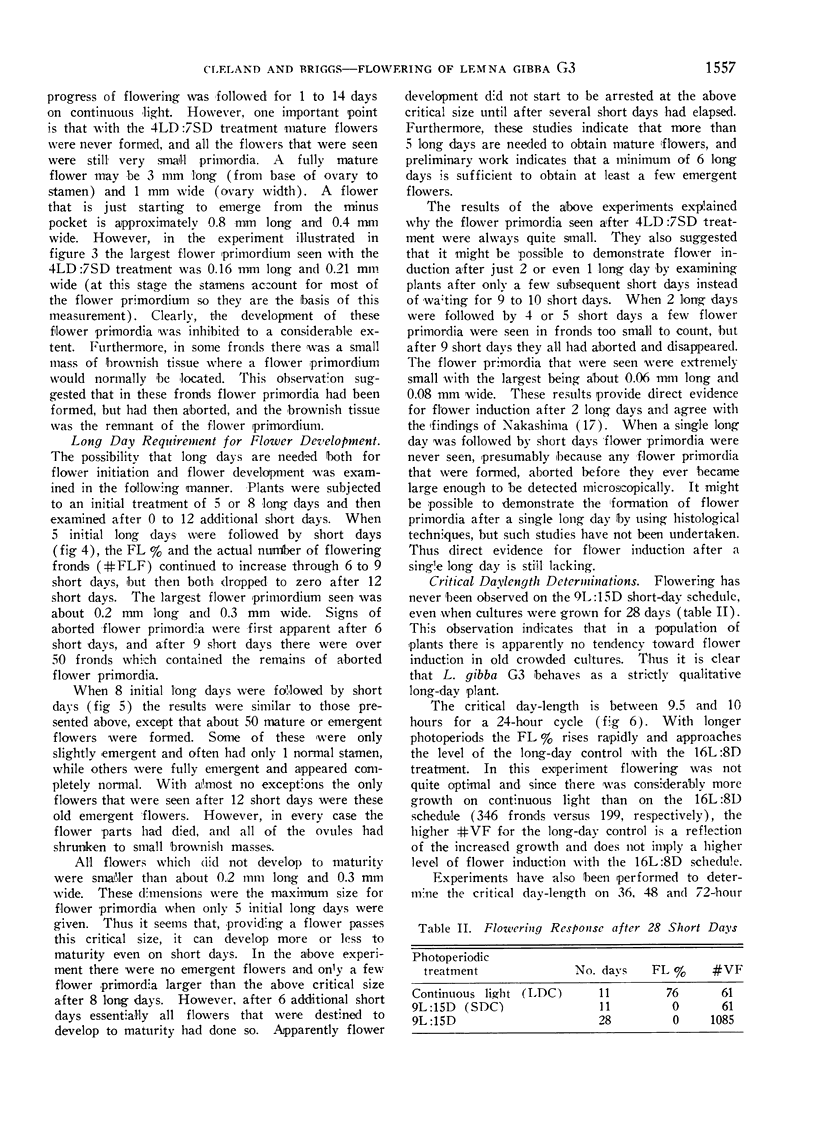
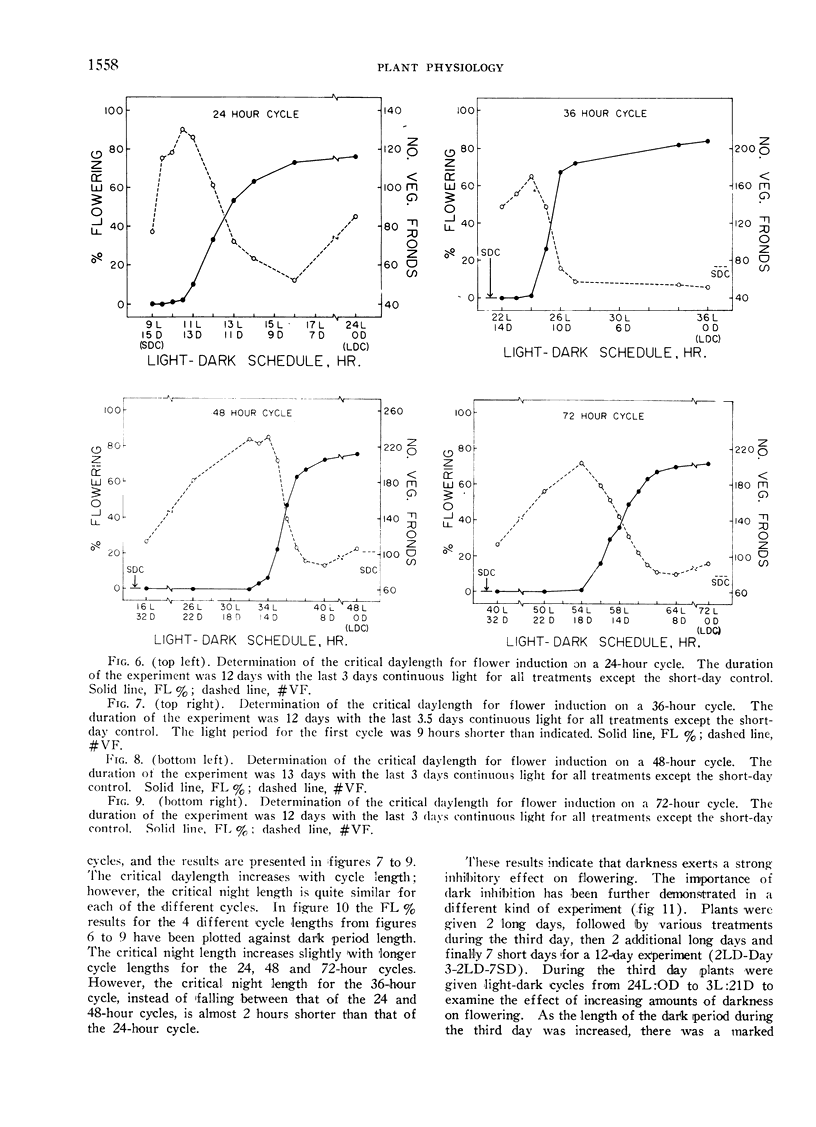
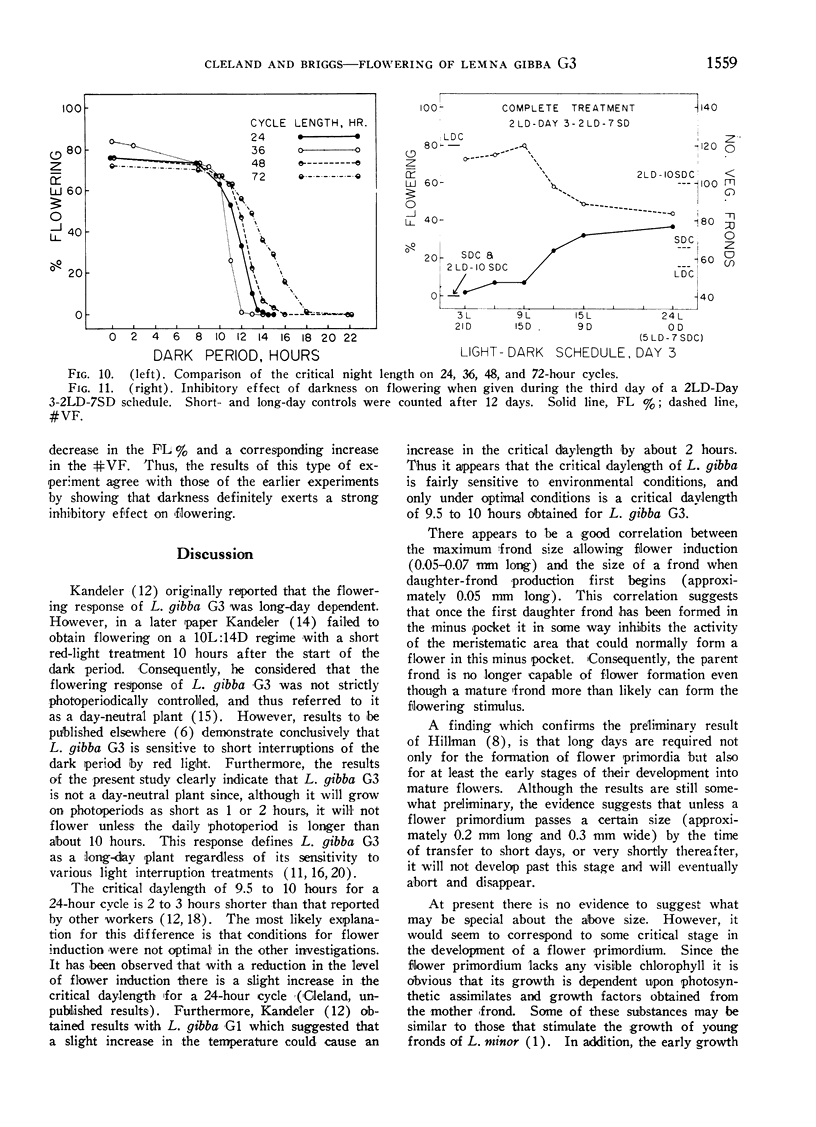
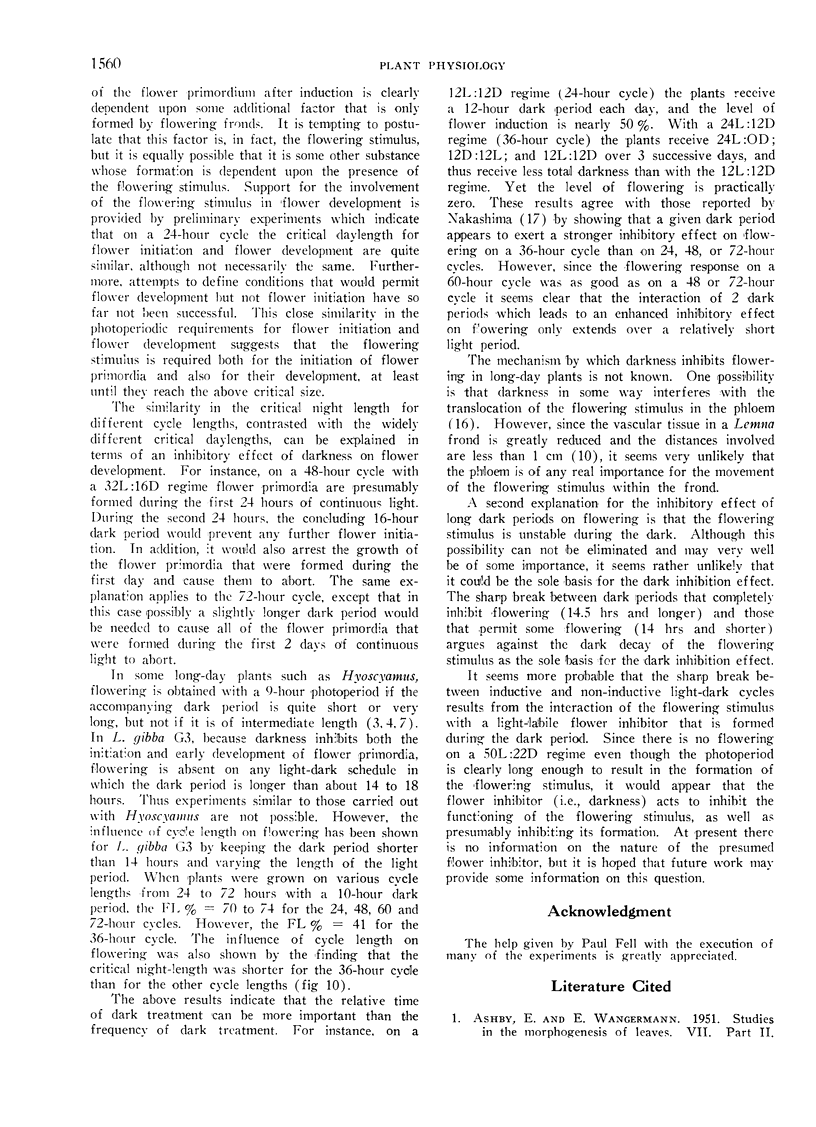
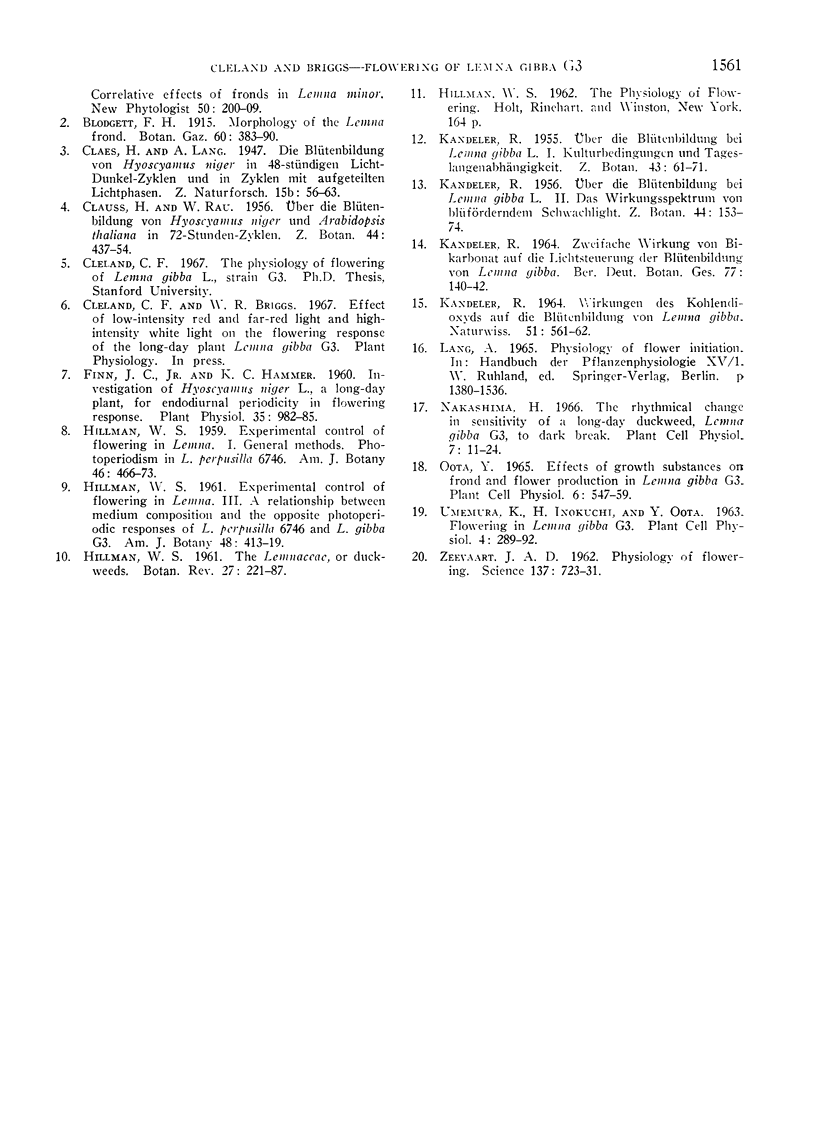
Selected References
These references are in PubMed. This may not be the complete list of references from this article.
- Finn J. C., Hamner K. C. Investigation of Hyoscyamus Niger L., A Long-Day Plant, for Endodiurnal Periodicity in Flowering Response. Plant Physiol. 1960 Nov;35(6):982–985. doi: 10.1104/pp.35.6.982. [DOI] [PMC free article] [PubMed] [Google Scholar]
- Zeevaart J. A. Physiology of Flowering: Flowering is hormonally controlled, but the nature of the hormone remains to be elucidated. Science. 1962 Sep 7;137(3532):723–731. doi: 10.1126/science.137.3532.723. [DOI] [PubMed] [Google Scholar]


